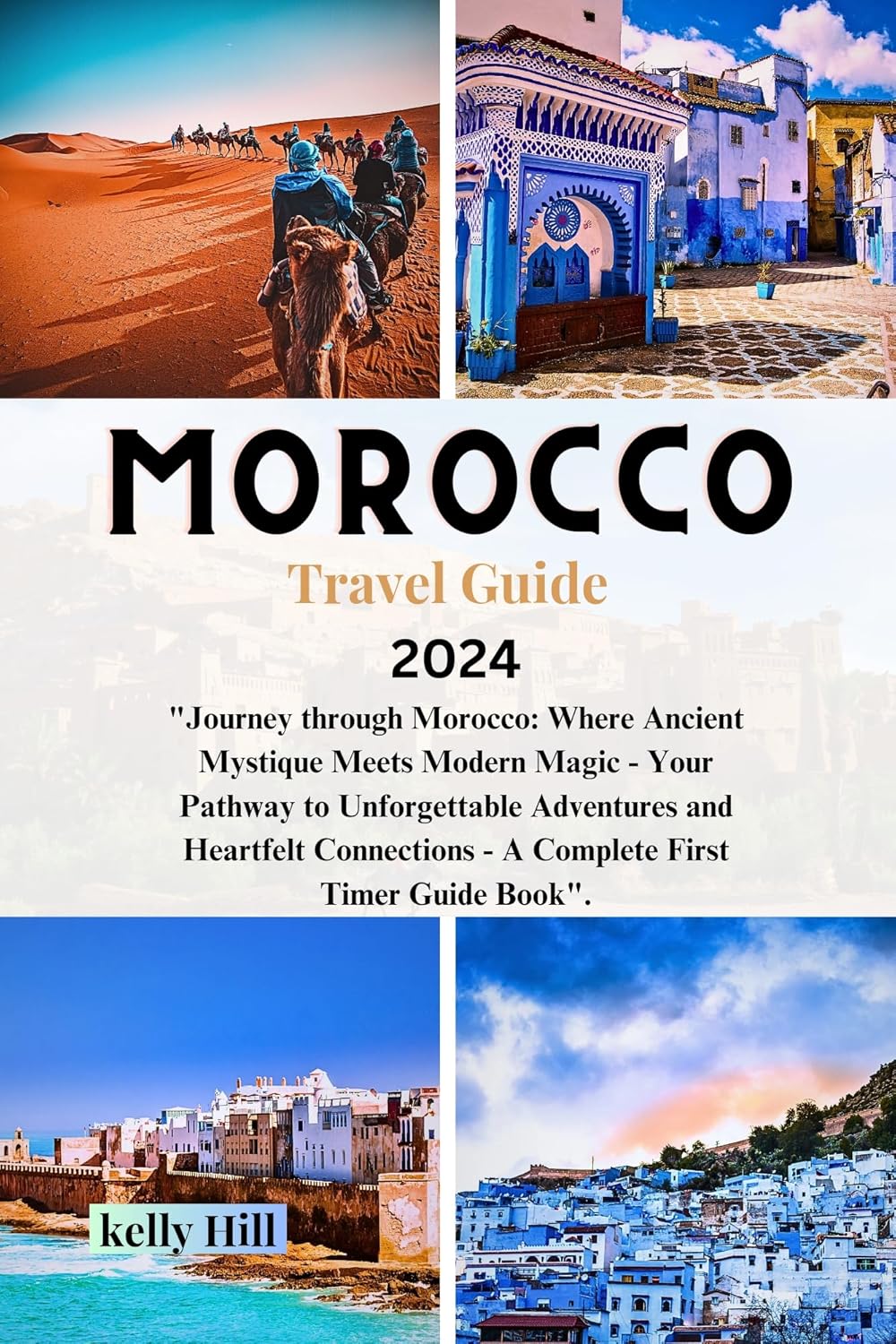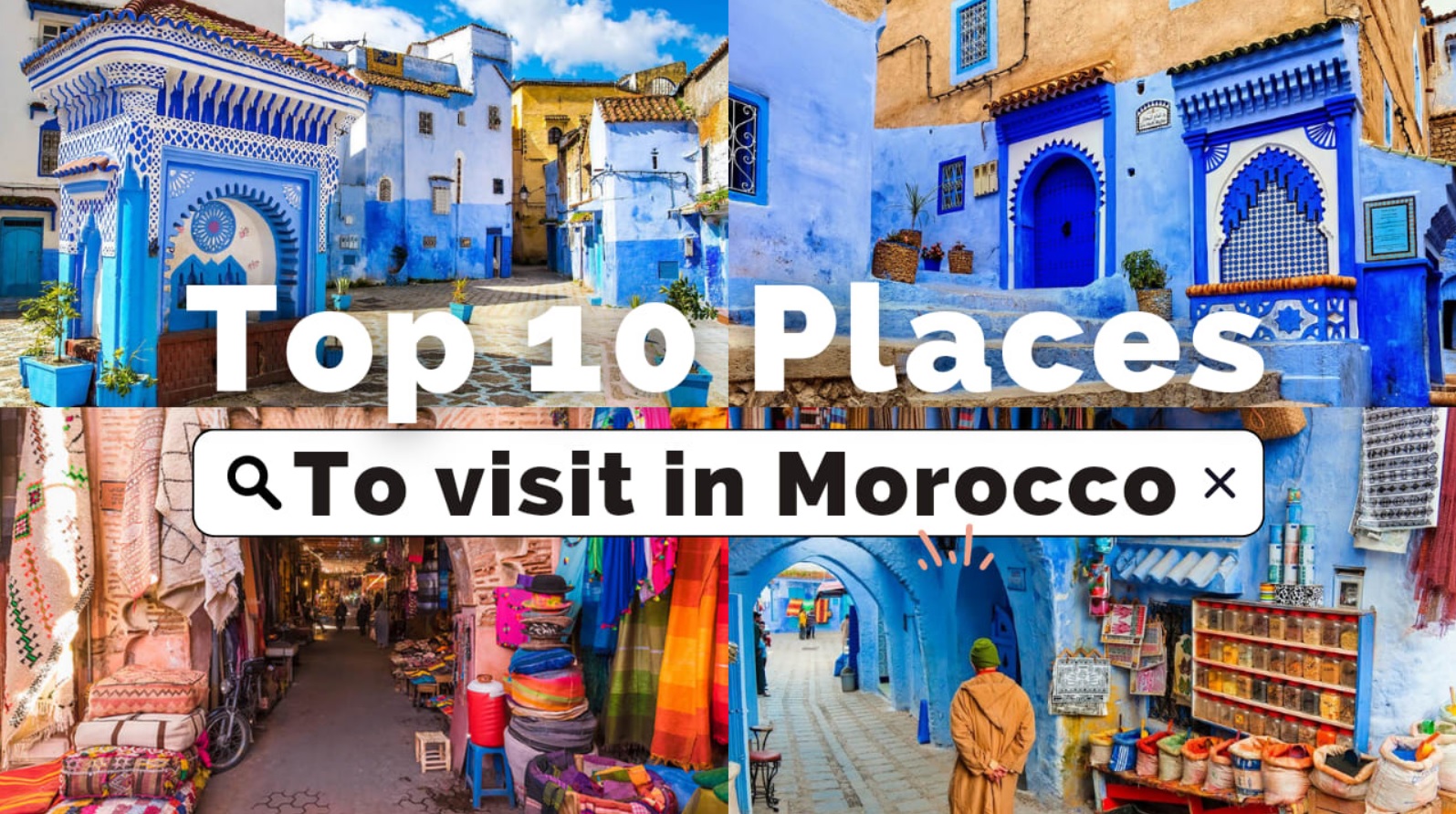
Morocco is not just a country; it’s a sensory experience. It’s the scent of spices and mint tea mingling in a bustling souk, the haunting call to prayer echoing over a labyrinthine medina, the sight of a million stars over the silent Sahara, and the taste of a slow-cooked tagine bursting with flavor. A land of dramatic contrasts, where ancient traditions coexist with modern life, Morocco offers a journey that captivates the soul and awakens the senses. From the snow-capped peaks of the Atlas Mountains to the sun-drenched Atlantic coast and the endless dunes of the desert, this North African kingdom is a tapestry woven with rich history, vibrant culture, and breathtaking landscapes.
This guide will navigate you through the essentials of planning your Moroccan adventure, from its unmissable attractions and deep-rooted history to the practical tips that will make your journey smooth and unforgettable.
A Glimpse into Morocco’s Rich History

Related Articles about Morocco: A Traveler’s Guide to the Kingdom of a Thousand Colors:
- The American Tapestry: A Comprehensive Travel Guide to the United States
- Austria: A Timeless Symphony of Imperial Grandeur, Alpine Majesty, and Artistic Soul
- A Wanderer’s Guide to Sweden: Unveiling the Land of Fjords, Forests, and Fika
- The Netherlands: A Journey Through Windmills, Canals, and Centuries of Charm
- A Tapestry of Dreams: Your Ultimate Travel Guide to France
To truly appreciate Morocco, one must understand the layers of its past. The land’s original inhabitants are the indigenous Amazigh people (often called Berbers), whose culture and languages remain a vital part of the national identity. The 7th century brought the arrival of Arab armies, introducing Islam and the Arabic language, which would profoundly shape the country’s destiny.
Over the centuries, a succession of powerful dynasties—the Almoravids, Almohads, Marinids, and Saadians—forged the Morocco we see today. They founded imperial cities like Marrakech and Fes, commissioning magnificent mosques, medersas (Islamic schools), and palaces whose intricate tilework (zellij), carved stucco, and cedarwood ceilings still leave visitors in awe.
The 20th century saw the country divided into French and Spanish protectorates, an influence still visible in the architecture of cities like Casablanca and Rabat, and in the widespread use of the French language. Morocco regained its independence in 1956 under King Mohammed V, and today, under the rule of his grandson, King Mohammed VI, it stands as a stable and modernizing constitutional monarchy that proudly preserves its unique cultural heritage.
Top Attractions: The Unmissable Jewels of Morocco
Morocco’s diversity is its greatest asset, offering a different world in every region.
Marrakech: The Red City
The beating heart of Morocco, Marrakech is an intoxicating blend of old and new. Its epicenter is the Djemaa el-Fna, a vast square that transforms from a marketplace by day to a whirlwind of storytellers, musicians, snake charmers, and open-air food stalls by night. Plunge into the adjacent souks, a dizzying network of alleys where you can bargain for everything from leather babouches and hand-woven carpets to fragrant spices and shimmering lanterns. For a moment of tranquility, escape to the Jardin Majorelle, a stunning botanical garden restored by Yves Saint Laurent, or marvel at the opulent beauty of the Bahia Palace, a masterpiece of Moroccan craftsmanship.
Fes: The Cultural and Spiritual Heart
Step into Fes el-Bali, the city’s ancient medina, and you step back in time. This UNESCO World Heritage site is one of the world’s largest car-free urban zones, a maze of over 9,000 alleys where donkeys are still the primary form of transport. Here you’ll find the famous Chouara Tannery, where leather is dyed in stone vats using age-old methods. Visit the Al-Qarawiyyin University, founded in 859 AD and recognized as the oldest continuously operating university in the world, and admire the exquisite architectural details of the Medersa Bou Inania. Fes is a city that rewards slow, deliberate exploration.
.jpg)
Chefchaouen: The Blue Pearl
Nestled in the Rif Mountains, Chefchaouen is arguably Morocco’s most picturesque town. Its medina is a dreamscape of blue-washed walls, doors, and stairways, creating a serene and photogenic atmosphere. The origins of the blue color are debated—some say it was introduced by Jewish refugees to symbolize heaven, others that it repels mosquitos. Regardless, the effect is magical. Spend your days wandering its charming streets, shopping for local handicrafts, and hiking in the surrounding mountains.
The Sahara Desert: An Ocean of Sand
No trip to Morocco is complete without experiencing the majestic Sahara. The most accessible entry points are Merzouga (for the Erg Chebbi dunes) and M’Hamid (for Erg Chigaga). The classic desert adventure involves a camel trek into the dunes to watch a spectacular sunset, followed by a night in a traditional Berber camp. Under a breathtaking canopy of stars, you’ll enjoy a tagine dinner, listen to local music around a campfire, and wake to a sunrise that sets the sand ablaze with color. It is a profoundly moving and humbling experience.
The Atlas Mountains
Stretching across the country, the Atlas range offers a rugged counterpoint to the bustling cities. The High Atlas, home to North Africa’s highest peak, Jebel Toubkal, is a trekker’s paradise. You can embark on multi-day hikes or take gentle walks through verdant valleys, passing through traditional Amazigh villages where life continues much as it has for centuries. The scenery is dramatic, with terraced fields clinging to steep hillsides and mud-brick kasbahs standing like sentinels.
Coastal Charms: Essaouira and Casablanca
For a dose of sea air, head to Essaouira. This laid-back, windswept port town is known for its fortified ramparts (Skala de la Ville), vibrant blue fishing boats, and thriving arts scene. It’s a perfect place to unwind, feast on fresh grilled seafood, and browse the many art galleries. Further north, Casablanca offers a different coastal experience. While largely a modern commercial hub, it is home to the Hassan II Mosque, a breathtaking architectural marvel that is one of the largest mosques in the world and one of the few open to non-Muslims. Its towering minaret and intricate details are a testament to modern Moroccan artistry.
Best Time to Visit
The best times to visit Morocco are during the shoulder seasons: spring (March to May) and autumn (September to November). During these months, the weather is pleasantly warm across the country, making it ideal for exploring the cities, hiking in the mountains, and venturing into the desert.
- Summer (June to August): Can be intensely hot, especially in Marrakech and the Sahara. However, it’s a great time to visit the cooler coastal regions like Essaouira.
- Winter (December to February): Cities are mild but can be rainy. The Atlas Mountains receive snow, offering a different kind of beauty but making high-altitude trekking challenging. The desert is sunny by day but can be freezing at night.
Navigating the Kingdom: Transportation
Getting around Morocco is surprisingly easy and affordable.
- Trains: The ONCF train network is modern, comfortable, and efficient, connecting major cities like Marrakech, Casablanca, Rabat, and Fes. It’s the best way to travel between these hubs.
- Buses: For destinations not served by rail (like Chefchaouen or the desert towns), CTM and Supratours are reliable and air-conditioned bus companies.
- Grand Taxis: These are shared, long-distance taxis that run on fixed routes between towns. They are a common and inexpensive way to travel, but they only depart when all six seats are full.
- Petit Taxis: These are the local, in-city taxis. Insist that the driver uses the meter (
compteur); if they refuse, simply wait for another one. - Car Rental: Renting a car offers the ultimate flexibility, especially for exploring the Atlas Mountains or the southern oases. Be prepared for chaotic city traffic and aggressive driving, but roads between major destinations are generally in good condition.
Where to Stay: From Riads to Desert Camps
Accommodation in Morocco is part of the experience itself.
- Riads and Dars: The most authentic way to stay in the medinas. These are traditional Moroccan houses built around a central courtyard or garden, offering a peaceful oasis away from the city buzz. They range from budget-friendly to ultra-luxurious and are known for their warm hospitality.
- Hotels: Major cities have a full range of modern hotels, from international chains to boutique establishments.
- Kasbahs and Auberges: In the south and the mountains, you’ll find accommodations in restored kasbahs (fortresses) or charming local inns (auberges), offering stunning views and a taste of rural life.
- Desert Camps: In the Sahara, you can choose between basic, traditional Berber camps for an authentic experience or luxurious "glamping" tents complete with private bathrooms and king-sized beds.
Practical Travel Tips for a Smooth Journey
- Currency: The currency is the Moroccan Dirham (MAD). It’s a closed currency, so you can only obtain it within Morocco. ATMs are widely available in cities.
- Dress Code: Morocco is a Muslim country. While it is relatively liberal, it’s important to dress respectfully. Men and women should aim to cover their shoulders and knees, especially when entering mosques or in more rural areas. A lightweight scarf is a versatile accessory for women.
- Bargaining: Haggling is an expected and integral part of shopping in the souks. The first price quoted is rarely the final price. Approach it with a smile and a sense of humor. A good rule of thumb is to start by offering about half the asking price and meeting somewhere in the middle.
- Food and Water: Drink only bottled or filtered water. Moroccan cuisine is a highlight—be sure to try tagine (a slow-cooked stew), couscous, pastilla (a sweet and savory pie), and an array of fresh salads. Mint tea is the national drink; accepting it is a sign of hospitality.
- Language: The official languages are Arabic and Tamazight (Berber). French is very widely spoken. English is common in tourist hotspots, but learning a few Arabic phrases like Salam Alaikum (Hello) and Shukran (Thank you) will be greatly appreciated.
- Scams and Touts: In busy medinas, you may be approached by people offering to be your guide. A polite but firm "La, shukran" (No, thank you) is usually sufficient. Be wary of anyone who insists a particular attraction is closed, as it’s often a tactic to lead you to their family’s shop.
Conclusion: Embrace the Magic
Morocco is a country that doesn’t just welcome you; it envelops you. It’s a place where every corner turned reveals a new sight, sound, or scent. It challenges your perceptions, delights your senses, and leaves an indelible mark on your memory. Whether you find yourself lost in the ancient alleyways of Fes, sipping tea with an Amazigh family in the Atlas Mountains, or watching the sun sink below the Saharan dunes, you’ll discover a land of profound beauty, deep-rooted tradition, and unparalleled hospitality. Pack your bags, bring an open mind, and prepare for an adventure that will stay with you long after you’ve returned home. The Kingdom of a Thousand Colors awaits.





